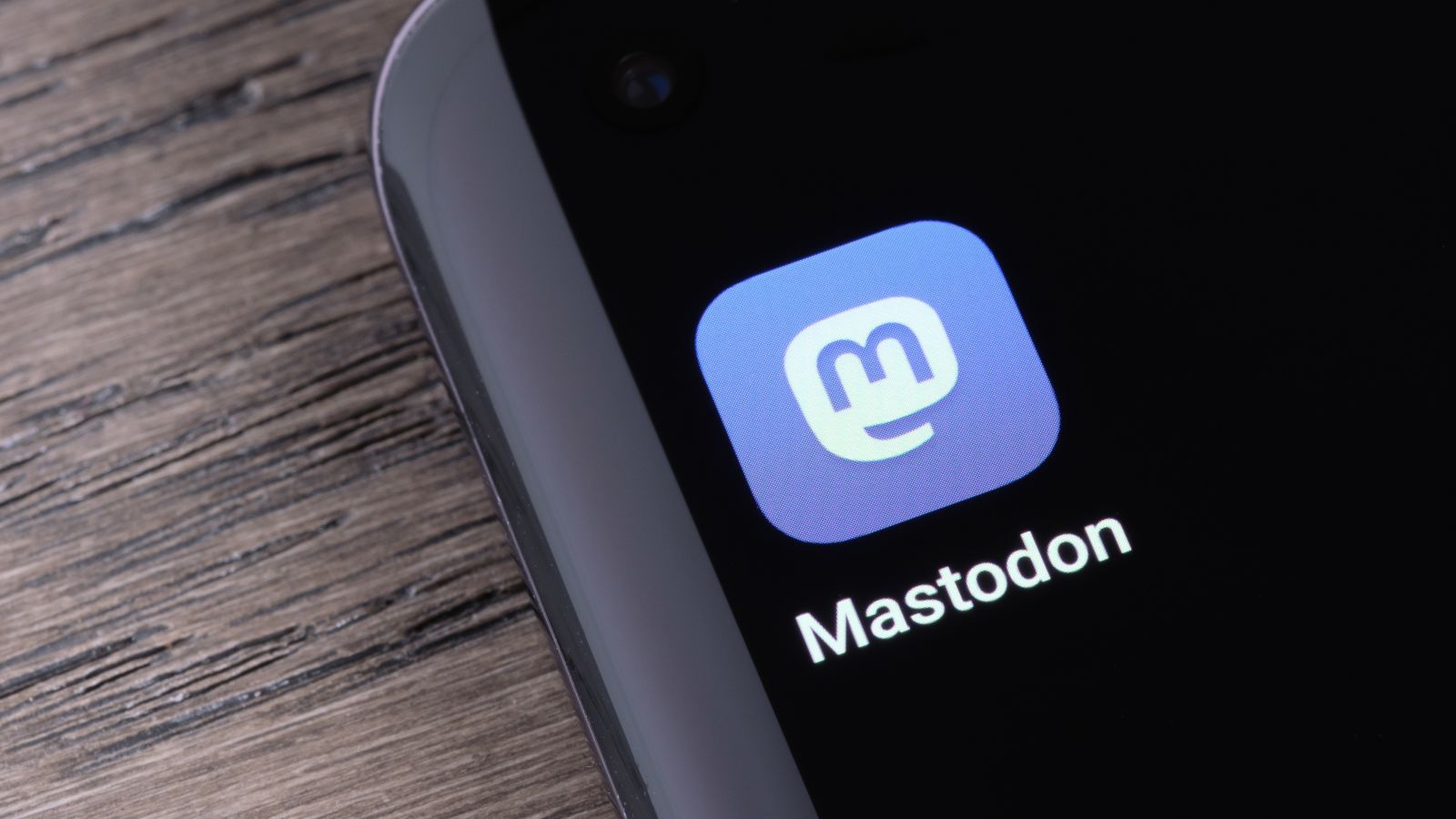(CNN) – Ago Elon Musk started to dominate TwitterThe number of people subscribing to the small social network Mastodon has increased significantly.
You may not have heard much about mastodons, which has been around since 2016, but is now growing at a rapid rate. Some are escaping from Twitter or at least looking Another option for posting your ideas onlineAs the popular social network faces layoffs, controversial product changes, a new approach to content moderation, and a jump in hate speech.
It may also be unclear what is the alternative to Twitter, which is a unique, fast-moving, text-heavy, conversational and news-oriented platform of influence. But Mastodon fills some needs.
The service looks similar to Twitter, with a schedule of short updates arranged chronologically rather than algorithmically. It allows users to join a large number of different servers operated by different groups and individuals, rather than a single central platform controlled by a single company such as Twitter, Instagram or Facebook.
Unlike the big social networks, Mastodon is free to use and ad-free. It is run by a non-profit organization led by its founder, Eugene Roshko, and is funded by microfinance, also known as crowdfunding.
Rochko said in an interview Thursday that Mastodon has gained 230,000 users since October 27, when Musk took control of Twitter. He said it now has 655,000 active users every month. Twitter reported in July that it had approximately 238 million active and monetized users daily.
“It’s obviously not as big as Twitter, but it’s the biggest network ever,” said Rochko, who created Mastodon more as a project than a consumer product.
Who is joining Mastodon?
Mastodon’s new registrations include some Twitter users with many followers, such as actress and comedian Katie GriffinWho joined at the beginning of November and the journalist Molly Jung Fastwhich joined at the end of October.
Sarah T. Roberts, an associate professor at UCLA and faculty director of the university’s Center for Critical Internet Research, is using Mastodon in earnest on October 30, after Musk took over Twitter. (He said he created another account years ago but only recently accessed it due to Twitter’s popularity among academics.)
Roberts, who worked at Twitter as a researcher on the task force earlier this year while taking leave from the University of California, Los Angeles, said she was inspired to start using Mastodon due to concerns about how editing Twitter content could change under Musk’s control. But he suspects that some newcomers are simply sick of social media companies fetching so much user data and running on ads.
He noted that Twitter users can switch to Mastodon because the user experience is quite similar. Many of Mastodon’s features and design (especially in its iOS app) will look familiar to existing Twitter users, albeit at a slightly different length. You can follow others, create short posts (there is a 500 character limit and images and videos can be uploaded), bookmark or repost other users’ posts, etc.
“It’s as close as you can get,” he said.
Feel like a newcomer on social media
I’ve been a Twitter user since 2007, but since people I follow on the social network have started posting their Mastodon usernames in recent weeks, I’ve been curious. This week, I decided to check out Mastodon for myself.
There are some key differences, particularly in how the network is configured. Since Mastodon user accounts are hosted on a large number of different servers, the costs of hosting users are spread over many different people and groups. But it also means that users are widespread, and it’s hard to find people you know. Rochko likened this setting to having different email providers, such as Gmail and Hotmail.
This means that the entire network is not under the control of a single person or company, but it also introduces some new complexities for those accustomed to Twitter, a product that has also been criticized over the years for being less intuitive than the popular Facebook and Instagram.
In Mastodon, for example, you have to join a specific server to register, some are open to anyone, while others require an invite (you can also Build your own servers). There is a server run by a non-profit organization behind Mastodon, Mastodon.social, but it is not accepting more users. I’m currently using one called Mstdn.social, where I can also login to access Mastodon on the web.
And while I can follow any other Mastodon user, regardless of which server they’re logged into, I can only see lists of who their Mastodon friends follow, or who their Mastodon friends follow, if the followers belong on the same server as the server. Signed up (I realized this while trying to track down more people I know who have signed up recently).
At first, I felt like I was starting over, in a sense, as a newcomer on social media. As Roberts said, it is very similar to Twitter in terms of appearance and functionality, and the iOS app is easy to use.
But unlike Twitter, where I can easily interact with a large audience, my Mastodon network has less than 100 followers. Suddenly I had no idea what to post, a feeling I never get on Twitter, probably because the sheer size of that network makes any post less relevant. However, I quickly got over it and realized that Mastodon’s small scale can be soothing compared to the endless stream of stimulus on Twitter.
Gateway to social media
However, I’m not quite ready to shut down my Twitter account. For me, Mastodon is a social media escape hatch in case Twitter becomes unbearable.
Roberts has not yet decided whether to close his Twitter account, but he was surprised at how quickly his followers on Mastodon were growing. Within a week of signing up and alerting his nearly 23,000 Twitter followers, he had amassed over 1,000 Mastodon followers.
“It could very soon be that people don’t want to be stuck on Twitter,” he said.
In a way, starting over can be fun, too. “I thought, ‘What will it be like when you start over? “
“It’s kind of interesting: Oh, this guy’s here! Here so-and-so! I’m so glad they’re here so we can be together.”



:quality(85)//cloudfront-us-east-1.images.arcpublishing.com/infobae/FE3FYP5TRJEE7FGYW3GQIDWF4E.jpg)


